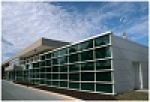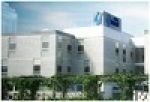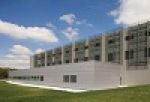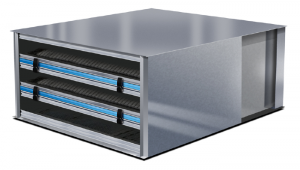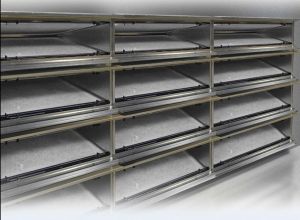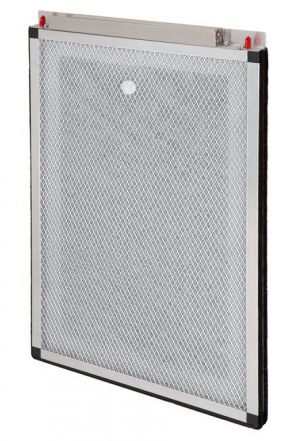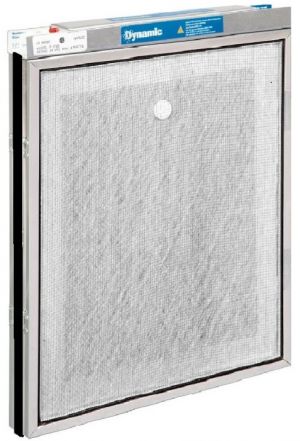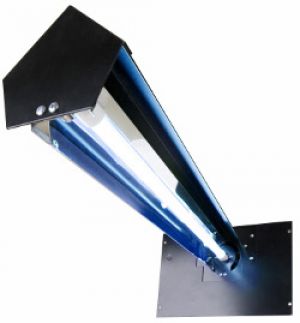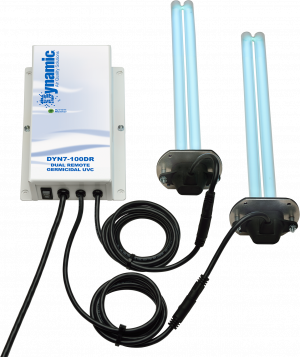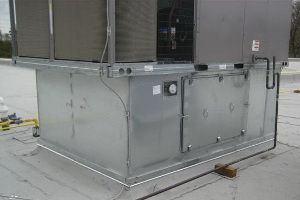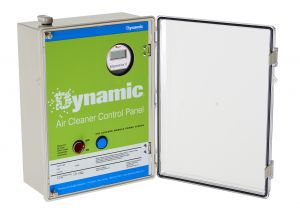Energy Solutions
Today’s architects are faced with a difficult task – how best to design buildings that meet up-to-date energy codes while still keeping costs down and clients happy. Advancements in filtration technology make it possible to conserve energy, improve indoor environmental quality, and dramatically reduce ongoing utility and operating costs. Based on detailed monitoring of an office building in Atlanta, Georgia, Dynamic V8 Air Cleaning Systems saved an average of almost 7 kWh of fan energy per square foot.
Dynamic provides three main Energy Solutions which reduce energy consumption and ongoing operating costs. They can also favorably influence HVAC equipment selection:
- Reducing Static Pressure
- Reducing Fan Energy
- Reducing Outside Air
HVAC accounts for about 40 percent of the energy used in U.S. commercial and residential buildings, making HVAC systems a good target for cost reductions and savings on a facility's annual operating budget. In new buildings, according to the U.S. Department of Energy, adopting energy-efficient design and technologies - in HVAC and other areas – can cut energy costs by as much as 50 percent. And in existing buildings, renovations that replace older systems with more efficient technology can yield savings of up to 30 percent.
Dynamic Air Cleaning Systems can slash operating costs by as much as 2/3 by reducing system static pressure, eliminating the need for pre-filters, reducing fan energy, extending maintenance intervals from months to years, and potentially cutting outside air requirements in half.
1. Lower Static Pressure
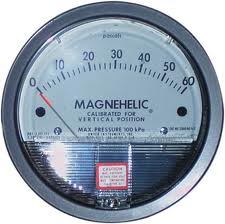
An HVAC system’s energy efficiency depends in large part to the system pressure drop: the higher the filter’s pressure drop, the harder the HVAC system motor(s) need to work to deliver the required air flow. Reducing system pressure drop has one of the greatest impacts on energy costs. The development of new filter media like that used in the Dynamic V8 Air Cleaning System has given the industry a chance to produce lower pressure drops while maintaining high particle capture efficiencies. This provides the ability to improve IAQ and reduce electricity costs simultaneously.
In existing buildings, switching to lower pressure drop filters is one of the easiest changes building owners and facility managers can make to reduce energy costs. That’s because with a lower pressure drop filter, the HVAC system motor needs to overcome less resistance to deliver the required air flow, thus reducing the motor’s energy consumption. The cost of energy far outweighs the cost of the filter itself. In fact, energy costs can be 4 to 10 times the initial filter cost of higher efficiency final filters.
The following figures illustrate the effect of a filter’s pressure drop on annual energy costs. You will note that Filter A and Filter B are identical except for the initial pressure drop. In a typical scenario, many might use initial cost as the primary criteria in choosing one of these filters over the other. But as the example shows, this won’t result in the correct filter choice in maximizing long-term energy savings. In the example, initial costs are kept constant to illustrate the effect of just pressure drop on operating costs.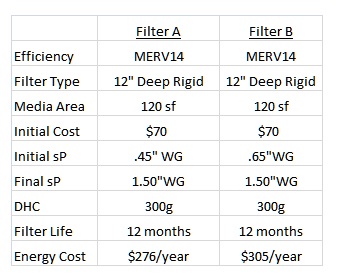
Calculation: Energy Consumption = Q*dP*t/n/1000
Assumes 24/7/365 operation, energy cost of $.08/kWh, fan motor, drive frequency (n) of 58 percent.
The lower pressure drop of Filter A saves approximately $29 in energy costs annually – about a 10 percent reduction in energy consumption. While an energy cost savings of $29 per year may not sound like a lot, keep in mind that those cost savings are per filter, not for an entire HVAC system. Most buildings contain many filters in each air handling unit, so savings can quickly add up.
2. Less Fan Energy
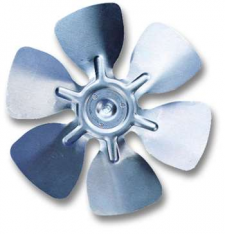
In an amendment within ASHRAE Standard 90.1, a standard was set for allowable brake horse power for each type of system and space use. Section 6.5 of the 2007 version of ASHRAE 90.1, (HVAC Air System Design and Control) sets allowances for brake horsepower based upon system type and its application. In many reviewed cases, the allowances are not able to be met with traditional filtration, making this approach, for some, the only method for compliance with Section 6.5 of the standard.
Lower static pressure corresponds directly to lower brake horsepower. Brake horsepower drives fan energy and so on. With Dynamic Air Cleaners, and using the prescriptive option under section 6.5.3 of ASHRAE 90.1, engineers can reduce energy and provide every customer with a payback worth investing in.
The construction industry has made great progress in implementing energy saving strategies that improve building efficiency and carbon footprint. There are various control and system strategies that will prove wise investments for building owners. Nearly all of them, however, are geared to reducing heating and cooling system consumption.
Dynamic Air Quality Solutions has contributed to fan energy reduction programs all over the world. In any building using pre and post filtration of MERV 8 and 13 or even higher, Dynamic can reduce mid-life static pressure by more than 1 inch and design static by more than 1.75 inches. This makes our systems an easy and effective tool for compliance to the new standard for measuring building airside efficiency. Like other aspects of ASHRAE, 90.1, the more the standard is exceeded, the higher the perceived building value and acceptance of performance. Ultimately, Dynamic Air Cleaners not only comply with the allowable adjustment for filtration - it can make investments in Dynamic air cleaning systems a no brainer!
Case in Point: In a recent energy audit of an office building in Boston with traditional filtration, 23 percent of the total annual electric consumed is HVAC fan energy. It was also calculated that 20 percent was HVAC cooling and heating. Imagine the impact of upgrading the filtration for this building from MERV 8 to MERV 13 and adding approximately 1.0 inches of mid-life static to the primary fans!
As you can see in the following example of a 34,000 cfm air handler and a $.16 blended utility rate, using Dynamic V8 Air Cleaners instead of 85% cartridge filters can save over $8,000/year in fan energy costs. Just from the reduction in static pressure in this model, design brake horsepower is reduced 14.3 bhp.
Technical Performance Deliverable:
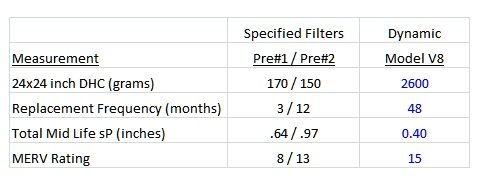
Financial Deliverable:

3. Reduced Outside Ventilation Air

Dynamic Air Cleaners, when used in place of 80%+ high-efficiency passive filters, can influence huge savings on fan energy and maintenance costs, using 2/3 less energy. But there is another little-known way in which filtration can impact even greater energy savings -- by optimizing ventilation air requirements using the ASHRAE IAQ Procedure.
Ventilation rates are used in conjunction with commercial building codes and construction practices. For many decades, outside ventilation air has been the primary means of diluting indoor contaminants. ASHRAE Standard 62.2-2010 offers two methods for determining the necessary outdoor air levels – the Ventilation Rate Procedure and the IAQ Procedure.
The Ventilation Rate Procedure is the easier of the two to apply and the vast majority of buildings are designed and operated under its guidelines. The ventilation rate standard specifies a combination of cfm per person and cfm per square foot for various types of buildings. For example, in a typical office space, the HVAC system must bring in 12-15 cfm/person of outdoor air.
When the current ventilation rates were adopted in 1989, two things were assumed: 1) the only means of dealing with contaminants in the space is by dilution with outdoor air (i.e. there is no air cleaning); and 2) the outdoor air level is sufficient to accommodate "moderate smoking" (based on 30% of the occupants smoking 1 cigarette per hour).
The ventilation standard also requires that outdoor air quality meet certain criteria, even though in practice this is something that is often undetermined or unmonitored. Today, we are increasingly apt to see different scenarios whereby 1) smoking is prohibited within the building, 2) low VOC-emitting building materials are used inside the building, and/or 3) outdoor ventilation air, especially in urban environments, is dirtier than the indoor air.
The IAQ Procedure is more complicated. It allows for greater fine-tuning and more efficient operation of the HVAC system and the outdoor air levels. But because it utilizes a series of complex calculations, it is less straightforward to use than the Ventilation Rate Procedure. Essentially, the guidelines state that if outdoor air and return air are filtered simultaneously, and the prescribed MERV ratings are met, ventilation air can be reduced by an amount calculated in the procedure. ASHRAE has developed formulas for calculating contaminant levels in a space and guidelines as to what levels are of concern. The IAQ Procedure gives designers and operators outdoor air credit for things such as no smoking, good airflow patterns, and air cleaning. Today we are able to put these in a format that is easy to implement, and makes meaningful predictions for CO2 and contaminant levels. In addition, we can use location specific climate and energy data to calculate potential operational savings.
Today, filtration systems have the ability to control particles, biologicals, and VOCs to ensure superior air quality and allow for significant reductions in outdoor air levels. In a typical building with no smoking and no unusual contaminant sources, outdoor air levels can often be reduced by as much as 50% (7.5 to 12.5 cfm/person). Such a reduction can yield significant operational savings in heating or cooling unconditioned outdoor air. For example, in a small office building with a 60-ton rooftop unit, annual savings can be expected in the range of $3,000 to $12,000, depending on the geographic location of the building (hot humid climates have the greatest costs/savings). That represents some significant savings. The other benefit to this approach is that any contaminants in outdoor air, should it be the source of problems inside a building (e.g. the entrainment of odors or vehicle exhaust emissions), are removed as air enters the building.
The Dynamic AirQ™ Program puts these in a format that is easy to implement, and makes meaningful predictions for CO2 and contaminant levels. Our operating cost analysis also uses location specific climate and energy data to calculate potential operational savings. Ask us about running an AirQ Report for your next project.
High efficiency air cleaning solutions can help with design standards compliance, reduce energy consumption and lower future operating costs. But there is still more. An obvious yet commonly ignored struggle in building efficiency is the energy impact from client expectations for a higher level of indoor air quality. The more that is observed about people and process efficiency losses due to poor indoor air quality, the greater the desire for high quality filtration. According to one of the EPA Rules of Thumb, benefits from improved comfort and better IAQ can further yield savings from enhanced productivity of up to 10 times the energy cost savings.
Case Studies
Union Fenosa Headquarters

Energy Challange: Reduce HVAC Energy Consumption
Solution: Dynamic 1" V-Banks
Seventh Street Elementary School
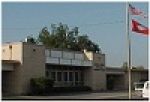
Energy Challenge: Reduce Ventilation Air
Solution: Dynamic 1" and 2" Panels


